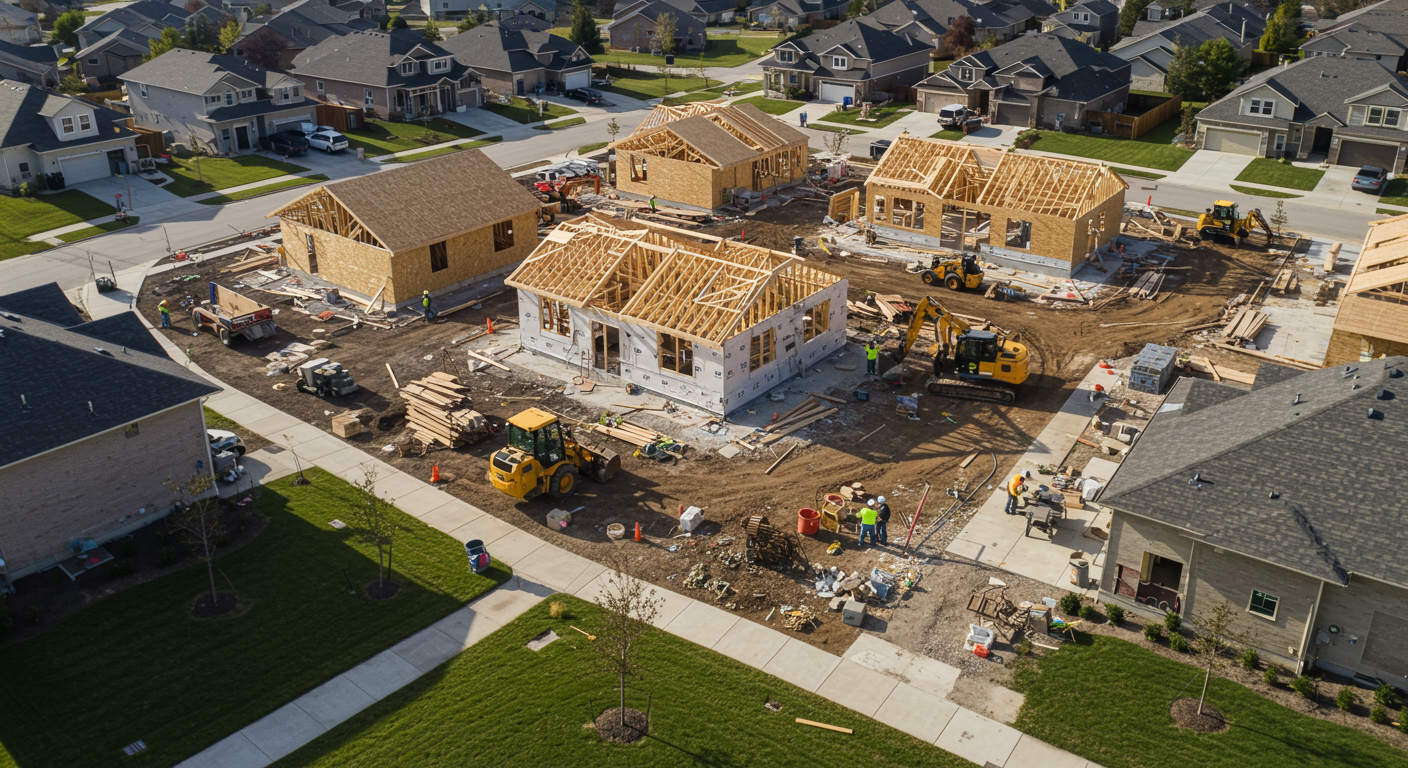Criminals know that weak video surveillance literally leaves businesses in the dark. Here’s how to keep sites safer after sundown with after-hours security.

Every business is most at risk from sunset to sunrise, making after-hours security a must. Little to no physical presence onsite combined with low light conditions make it easier for criminals to get in and cause damage, whether that’s theft, vandalism, or trespassing (taggers love to combine the last two).
The construction sector faces pronounced risk from thieves seeking to exploit open-plan sites filled with expensive equipment and materials. Safeguarding the hours between 6 p.m. and 6 a.m. is thus critical to a business’ surveillance strategy.Â
This guide will explore today’s state-of-the-art surveillance options and how after-hours security can protect your interests from dusk till dawn.
The basics of after-dark surveillance
If you guessed “using lots of lights” when thinking about what would be effective for night security, then you’re halfway right! Illuminating as much of a site as possible can be enough of a deterrent against some criminal activity. Those lights must work in tandem with other tactics to be truly effective for after-hours security, however. Otherwise you’re simply putting a spotlight on your site and helping criminals see everything they can steal, deface, or damage.
Here are a few things to keep in mind:
- Location and types of equipment matter – Ideal after dark lighting locations are at entrances and exits and around important areas like stock rooms, equipment storage, management offices, and financial deposit spots. Choosing weatherproof site lighting triggered by motion detection is another good idea, however the likelihood for false alarms increases.
- Monitored surveillance improves security – Installing monitored surveillance greatly reduces the chances of motion-related false alarms because it provides video-verified responses. Site owners and first responders can use certified feedback from experienced off-site surveillance personnel to gauge the severity of an incident. This saves time and helps all sides perform more efficiently.
- Positioning is key – Optimal positioning is crucial when combining bright security lights and surveillance cameras. A standard lens placed too far from a light source will struggle for clear footage. When placed too close, the illumination can blind the lens and cause the same problem.
There’s one other weakness of purely light-based security: A site using only strong illumination to tackle the darkness inadvertently creates some of their own. Lighting casts shadows and – depending on the layout of the site – those man-made dark areas may be large and long enough for criminals to hide in.
How thermal cameras cool down criminal activity
One strong solution to enhance after-hours security is a camera that can see in the dark. Thermal cameras provide surveillance superior to night vision because heat radiation, not light, is the prime factor in their performance. This gives it the edge on purely night vision lenses, which rely on a small amount of greatly magnified light. They:
- Eliminate issues like nearby site lighting blinding the lense
- Remove shadows’ ability to conceal bad actors
- Also work during the day, since they are unaffected by light
Site managers can use thermal cameras to keep a much more effective eye on any suspicious after-dark activity while increasing their long-distance intrusion detection.
The pros of thermal cameras for after-hours security
There’s nowhere for intruders to hide when thermal imaging is used. This technology creates real headaches for arsonists, who are some of the construction industry’s most harmful intruders. The National Fire Protection Agency (NFPA) states that the risk of arson can be reduced when sites use lighting and after-hours security personnel.
Here’s what to know:
- Adding thermal cameras enables off-site surveillance agents to use thermal radiology to fully scrutinize low- or zero-light conditions and send text or email alerts as required.Â
- The quality of results a site receives from thermal surveillance depends on the quality of the camera and its installation.
- Cameras generally range from 160 x 120 pixels to 640 x 480. The more pixels, the better the picture quality.Â
If you’re worried about thermal sensitivity, Mobile Video Guard has you covered. We can spot a 0.05 degrees Celsius shift in temperature or follow a temperature threshold set by the client to further minimize unnecessary alerts. We can also speak directly to the site, providing our own kind of illumination in the form of bright red and blue strobes to complement real-time speaker messages directed at potential onsite criminals. Our agents will then take the initiative to contact fire departments and/or law enforcement as the situation merits.
The cons of thermal cameras for after-hours security
Thermal surveillance can greatly improve visual security, but it doesn’t grant Superman-like vision. Just as the Man of Steel can’t see through lead, thermal cameras can’t see through walls, concrete, metals, or glass. This is because glass reflects infrared radiation. Any surface with a degree of reflectivity will have a similar dampening effect as will thick plastics.
Vision-impairing environmental conditions like smoke, fog, or rain can also affect thermal cameras’ performance, but typically not to a significant degree. Older camera models don’t allow easy sharing of footage via Wi-Fi, either. This impedes the customer’s ability to conveniently check in on their thermal feeds via their own mobile devices.
These weaknesses can be eased with the WES3 system, and Mobile Video Guard can help. These easy-to-install units are certified to international standards to quickly pick up smoke and heat where thermal cameras may be impaired. Units operate without need for external power, can prove indispensable in deterring site vandals, and can aid emergency responders.
Contact the video surveillance professionals with any questions
The Mobile Video Guard team is experienced in providing customers across multiple sectors with surveillance advice and security solutions that work. We can help you set up a quality after-hours security system and provide ongoing technical advice and hardware support.Â
Contact Mobile Video Guard today and speak with an expert to learn more!




